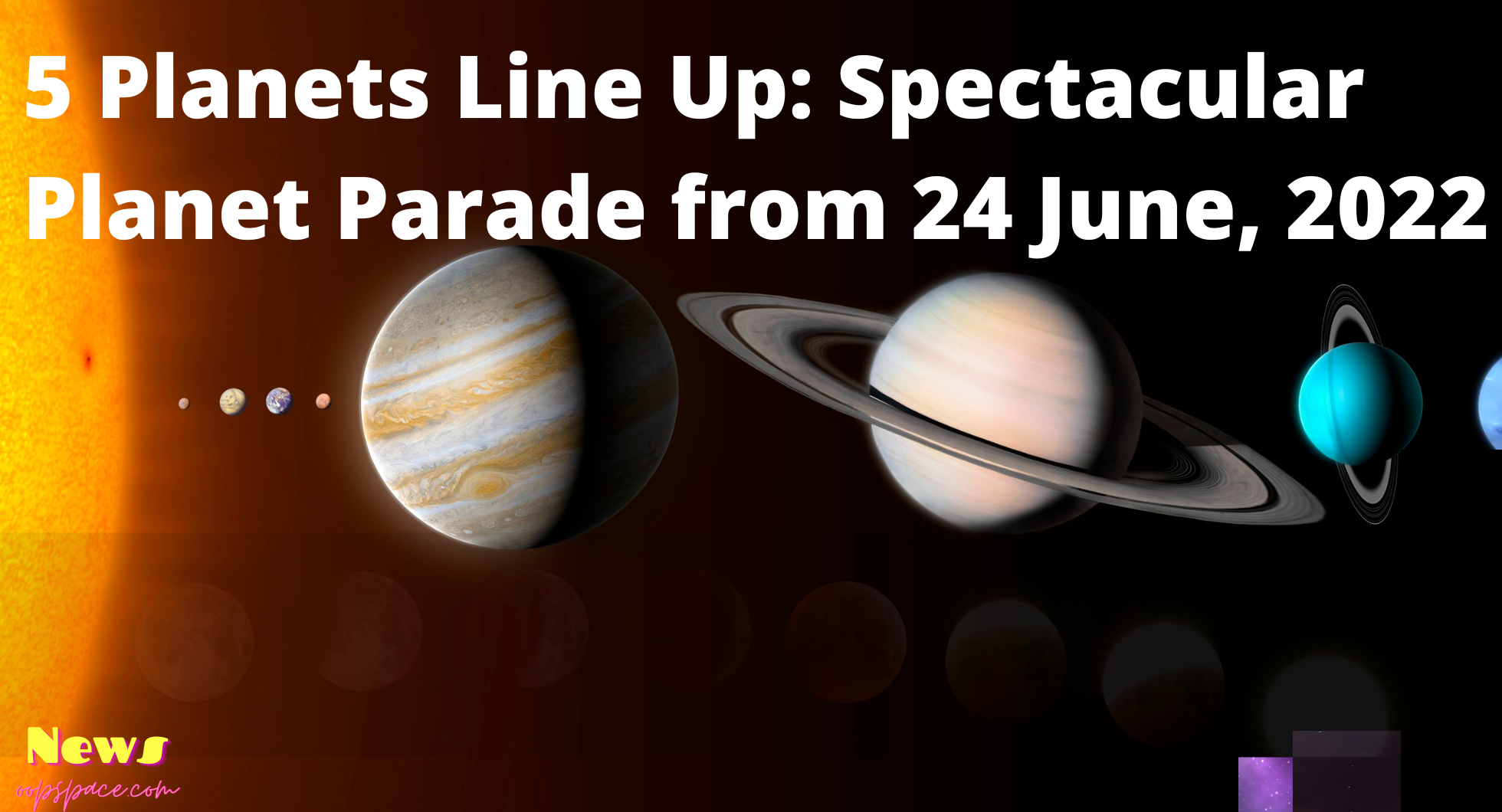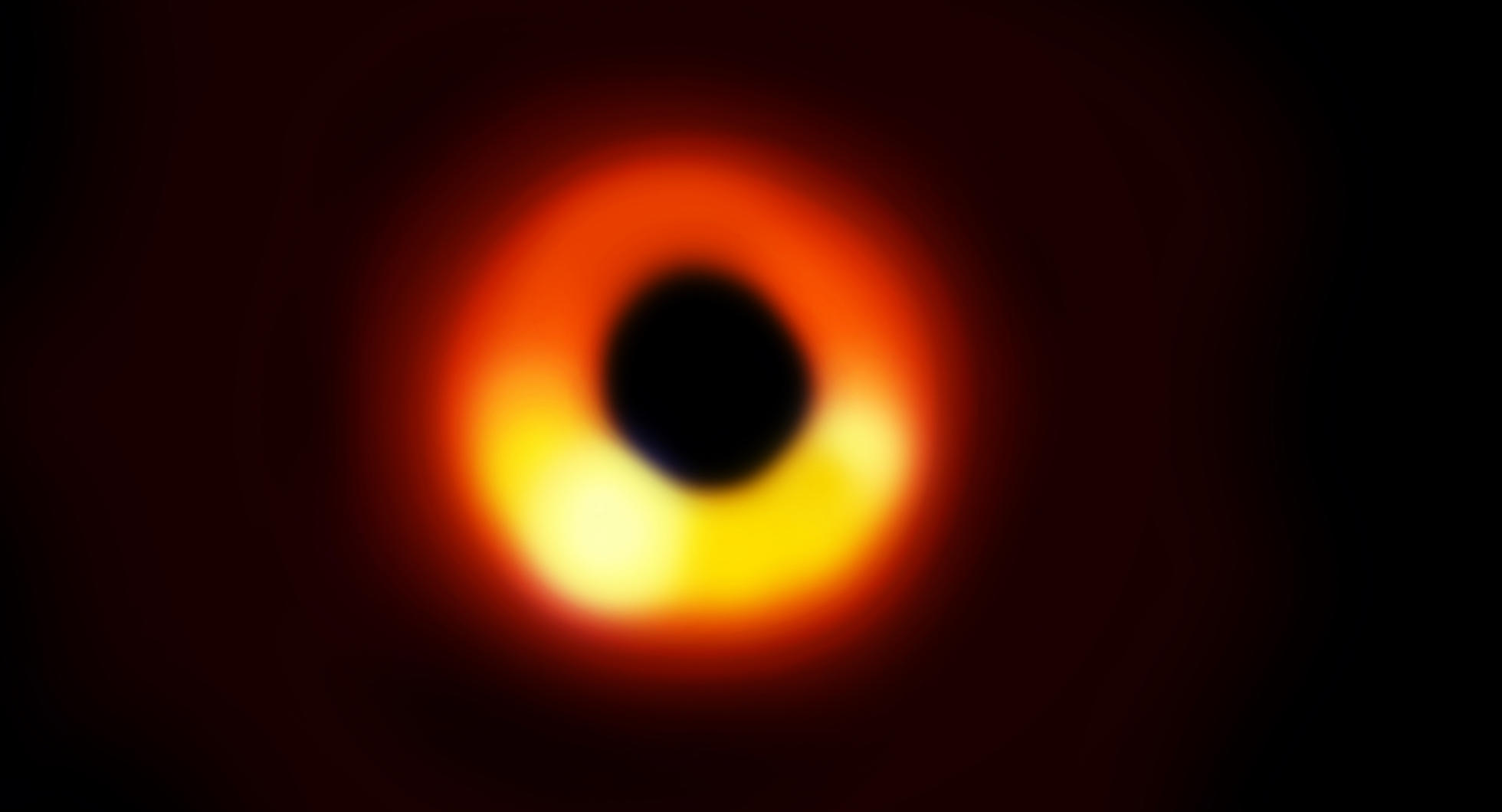5 Planets Line Up: Planet Parade from 24 June, 2022

On the morning of June 24, there will be the year’s most amazing planet parade. Five Solar System planets along with the crescent Moon will line up in the sky today, on June 24, 2022. Mercury, Venus, Mars, Jupiter, and Saturn will all be in alignment in the sky for observers to behold. In actuality, Neptune and Uranus will also participate in the celestial extravaganza, making this a seven-planet alignment. These two enormous planets, however, are too faint to be seen with the human eye.
About an hour before sunrise, you should begin your observations. The planets will span the sky from east to south (or, at southern latitudes, north to east). The planets will rise sooner and soar higher in the Southern Hemisphere, giving observers a better perspective.
You can use mobile applications like Star Walk 2 or Sky Tonight to quickly detect and identify planets on the dome of the sky. The apps will identify the item you are looking at if you simply aim your device at the sky. You may stay up to date on the most important celestial occurrences with the aid of the apps’ notifications.
What is a planet parade?
The phrase “planetary parade” is frequently used in astronomy to refer to an astronomical occurrence that occurs when planets of the Solar System line up in a row in the same region of the sky, as observed by observers on Earth, even though there is no official scientific title for it. This phenomena has no single definition. The three that are most frequently employed are:
An astronomical phenomenon that happens when several planets align in a row on the same side of the Sun, as seen from above the plane of our Solar System.
A planet parade of this type happened on April 18, 2002, and then on July 4, 2020. At that time, all planets of the Solar System that are visible to the naked eye lined up in a row in the evening sky. According to preliminary forecasts, such planet parades will take place in 2022, 2040, and 2854.
All of the planets in the solar system can very rarely be seen clearly in one night. Planet parades are another name for these occasions. The optimum viewing circumstances for outer planets are around oppositions and near the highest elongations for inner planets.
Types of planetary parade
A planet parade is also referred to as a “appulse.” Depending on the number of participating planets. The categories of planetary parades are mini planet parade of only 3 planets, small planet parade of 4 planets, large planet parade, that includes 5 or 6 planets and great (full) planet parade, in which all Solar System’s planets, including Pluto.
Mini planet parades are a common occurrence. Several times a year, three planets can be seen together in the same area of the sky.
Planets alignment: When does it take place?
The planetary alignment during a planet parade should not be taken literally, it is crucial to note. In contrast to what is typically depicted in photographs, planets rarely align in a single, absolutely straight line. The planets of the Solar System will never be precisely lined up since they do not all orbit in the same plane properly and instead move about on separate orbits in three-dimensional space.
Astronomers typically refer to the alignment or parade of planets as their appearance in the same region of the sky. Although it’s not usually the case, the placement of the planets in the sky occasionally resembles a line. Most frequently, a line in the sky is formed by two or three planets.
In addition, the viewpoint affects a lot. For viewers on Earth, the planets may not always appear to be in the same area of the sky when they line up on one side of the Sun. Conversely, even though planets appear to be in the same area of the sky when viewed from Earth, they may not actually be aligned when viewed from the Sun.
When did the planets last line up in perfect alignment?
A rare and exceptional planet parade was held on July 4, 2020. Mercury, Venus, Earth, Mars, Jupiter, Saturn, Uranus, Neptune, and Pluto, together with the dwarf planet, lined up on one side of the Sun at the same time. This planet procession belonged to the first of the three categories mentioned above. Since the deviation angle was so minor, the alignment was not nearly perfect. The previous parade of planets of this kind occurred in 1982, and the following one is anticipated in 2161.
Additionally, the third form of planetary parade took place in August 2020, allowing observers to see all the planets in one night. At the beginning of the month, bright Venus was positioned close to the elusive planet Mercury in the early sky. The gas giants Jupiter and Saturn, as well as the red planet Mars, distant Uranus, and Neptune, which were all approaching their oppositions, were all in favorable observational positions. Pluto, a faint minor planet, even provided skywatchers with good viewing circumstances due to its opposition.
April 20, 2022 marked the final day of the globe parade. Only Venus, Mars, Jupiter, and Saturn were lined up in the sky, making it less stunning than the one in August 2020.
Next major planetary alignment
The stunning planet parade that follows will take place on September 8, 2040, says NASA. Five naked-eye planets will be located within a circle of about 10 degrees in diameter. The alignment will include Mercury, Venus, Mars, Jupiter, and Saturn. The crescent Moon will also be visible, positioned between Venus and Saturn. The best time for observations will be around 19:30 local time.
In the upcoming planet parade, the five planets will line up in a row as seen from above the plane of the Solar System. Astronomers say this means they will form an almost straight line in space but not in the sky for an observer on the Earth. However, as the planets will appear very close together, it will still be a stunning view.
Auto Amazon Links: No products found.


